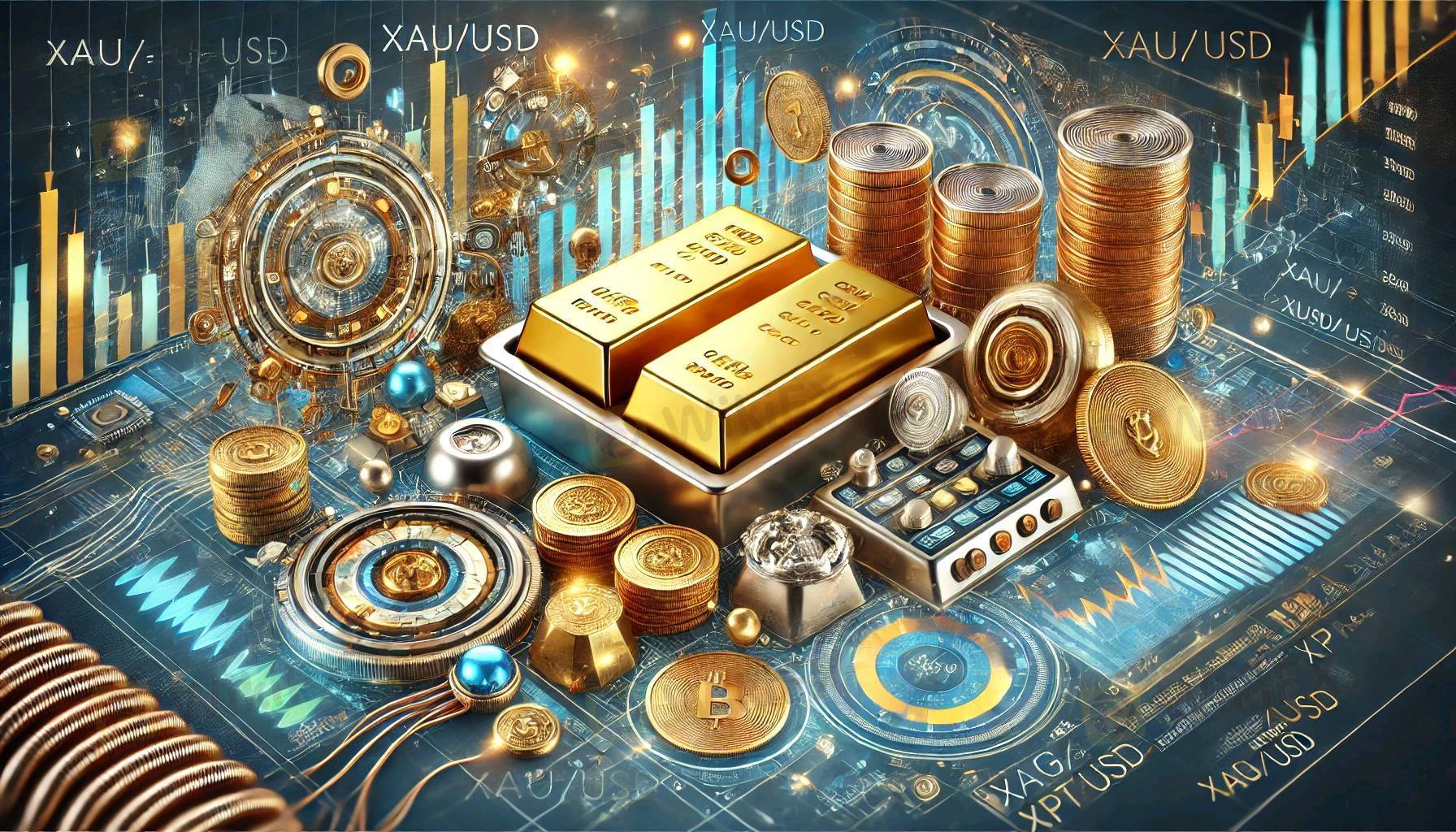
2025-01-31 20:24
IndustriyaExploring Tradable Metals: Your Gateway to profit
#firstdealofthenewyearFateema
Trading metals has become a popular way for investors to diversify their portfolios. Precious and industrial metals offer unique opportunities, each influenced by distinct market dynamics. Here’s what you need to know:
Types of Tradable Metals
1. Precious Metals
Gold (XAU/USD): Known as the ultimate safe-haven asset, gold prices tend to rise during economic uncertainty or geopolitical instability.
Silver (XAG/USD): A versatile metal used in both industrial and investment purposes, silver is more volatile than gold and offers greater price swings.
Platinum (XPT/USD): Valued for its rarity and industrial applications, platinum's price often correlates with the automotive industry.
Palladium (XPD/USD): Used mainly in catalytic converters, palladium is driven by demand in the automotive and industrial sectors.
2. Base Metals
Copper: Widely used in construction and electronics, copper is a barometer for global economic health.
Aluminum, Nickel, Zinc: These metals are driven by industrial demand and emerging market growth.
Why Trade Metals?
Portfolio Diversification: Metals provide a hedge against inflation and currency fluctuations.
Safe-Haven Status: Precious metals like gold can protect your portfolio during market volatility.
Economic Indicators: Industrial metals like copper often signal global economic trends, helping traders make informed decisions.
Trading Tips for Metals
1. Understand Supply and Demand: Keep an eye on mining output, geopolitical tensions, and industrial demand.
2. Track Economic Indicators: Industrial metals are heavily influenced by manufacturing data, while precious metals respond to interest rates and inflation.
3. Choose the Right Instrument: Metals can be traded through spot markets, futures, ETFs, or CFDs, depending on your trading style and goals.
4. Risk Management: Metals can be volatile, especially during economic uncertainty. Use stop-loss orders and manage your leverage carefully.
Katulad 0
FX3018345953
Mangangalakal
Mainit na nilalaman
Pagsusuri ng merkado
Dogecoin cheers coinbase listing as Bitcoin’s range play continues
Pagsusuri ng merkado
Grayscale commits to converting GBTC into Bitcoin ETF:
Pagsusuri ng merkado
Bitcoin's price is not the only number going up
Pagsusuri ng merkado
Theta Price Prediction:
Pagsusuri ng merkado
How to Research Stocks:
Pagsusuri ng merkado
Bitcoin (BTC), Ethereum (ETH) Forecast:
Kategorya ng forum

Plataporma

Eksibisyon

Ahente

pangangalap

EA

Industriya

Merkado

talatuntunan
Exploring Tradable Metals: Your Gateway to profit
 Nigeria | 2025-01-31 20:24
Nigeria | 2025-01-31 20:24
#firstdealofthenewyearFateema
Trading metals has become a popular way for investors to diversify their portfolios. Precious and industrial metals offer unique opportunities, each influenced by distinct market dynamics. Here’s what you need to know:
Types of Tradable Metals
1. Precious Metals
Gold (XAU/USD): Known as the ultimate safe-haven asset, gold prices tend to rise during economic uncertainty or geopolitical instability.
Silver (XAG/USD): A versatile metal used in both industrial and investment purposes, silver is more volatile than gold and offers greater price swings.
Platinum (XPT/USD): Valued for its rarity and industrial applications, platinum's price often correlates with the automotive industry.
Palladium (XPD/USD): Used mainly in catalytic converters, palladium is driven by demand in the automotive and industrial sectors.
2. Base Metals
Copper: Widely used in construction and electronics, copper is a barometer for global economic health.
Aluminum, Nickel, Zinc: These metals are driven by industrial demand and emerging market growth.
Why Trade Metals?
Portfolio Diversification: Metals provide a hedge against inflation and currency fluctuations.
Safe-Haven Status: Precious metals like gold can protect your portfolio during market volatility.
Economic Indicators: Industrial metals like copper often signal global economic trends, helping traders make informed decisions.
Trading Tips for Metals
1. Understand Supply and Demand: Keep an eye on mining output, geopolitical tensions, and industrial demand.
2. Track Economic Indicators: Industrial metals are heavily influenced by manufacturing data, while precious metals respond to interest rates and inflation.
3. Choose the Right Instrument: Metals can be traded through spot markets, futures, ETFs, or CFDs, depending on your trading style and goals.
4. Risk Management: Metals can be volatile, especially during economic uncertainty. Use stop-loss orders and manage your leverage carefully.
Katulad 0
Gusto kong magkomento din
Ipasa
0Mga komento

Wala pang komento. Gawin ang una.

Ipasa
Wala pang komento. Gawin ang una.